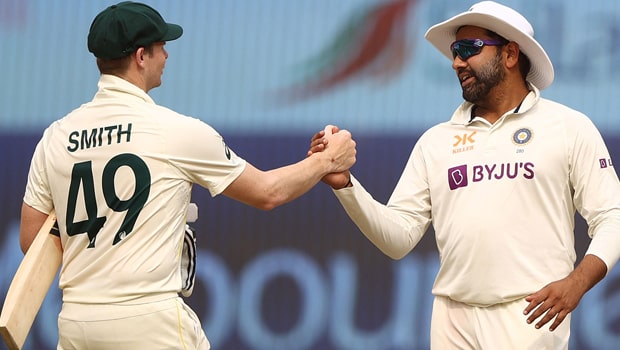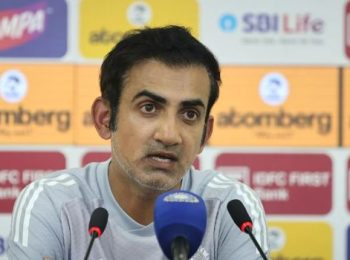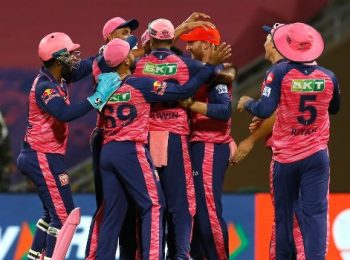It wasn’t the way they intended to do it, but Rohit Sharma and the Indian cricket team were able to finally seal their place alongside Australia in this summer’s World Test Championship final on day five of the fourth and final Border Gavaskar Test match in Ahmedabad.
Just minutes before the Indian team descended the steps and back onto the field for the second session of the fifth day, their spot at The Oval from June 7 was confirmed as members of the team tracked the result of a thrilling New Zealand vs Sri Lanka Test match in far off Christchurch, which ended with the heroic home captain Kane Williamson lying sprawled at the nonstriker’s end, having just pinched a leg bye to seal a dramatic two-wicket win off the last ball of the match.
The fact that some of the Indian cricket team and countless fans of Indian cricket, as well as many analysts and pundits, were tracking the first Test between New Zealand and Sri Lanka, while the final day of a dull Test played out in front of the virtually empty 100,000-seater Narendra Modi Stadium, spoke of the narrative that the WTC has brought to the five-day format as well as how useless the Ahmedabad pitch was. India had no chance of winning the fourth Test with the nature of the surface leaving most surprised and disappointed, and the impending draw shifted attention to Christchurch because a 2-0 series win for Sri Lanka would eliminate Rohit’s team.
A facile draw after New Zealand’s narrow win has set up a rematch of India vs Australia at The Oval in June, which is good news for fans of the best Test rivalry going around in that they will not have to wait until 2024-25 to see these two sides go against each other in the five-day game. But India would surely have wanted it to end differently.
After three wholly engrossing Test matches across Nagpur, Delhi and Indore, the series finale was a disappointment because of the Narendra Modi Stadium pitch on which just 22 wickets fell in five days. From an Indian perspective, the only real gainers from this draw were Virat Kohli, who ended 1205 days without a Test century by scoring 186 off 364 deliveries, which is his second longest ever innings, and Shubman Gill who dominated earlier with 128. Three ODIs versus Australia and the longest IPL lie ahead, but Kohli scoring his first Test century since November 2019 and Gill, at 23 the future of Indian batting, repaying the faith are good signs for India going to The Oval to contest the WTC final.
But did Rohit and coach Rahul Dravid really want a benign surface like this? The odds are, no. The Indore surface copped a ‘poor’ rating by the ICC match referee, and rightly so, but one cannot fathom the Indian team’s management asking the Ahmedabad curator for a track such as this, which had nothing in it for pacers or spinners and was not exactly easy to bat on. This Indian team has backed the formula of playing on spinning tracks despite the risk of it backfiring, exactly as it did in Indore, and you get the sense that they would have been satisfied with a pitch similar to Delhi or Nagpur.
As expected, Rohit deflected questions of the dull Ahmedabad pitch throughout and after the final Test, which says plenty. India would have wanted to win the BGT 3-1 to make their passage to the WTC final more commanding, instead of having to rely on a result elsewhere. Somewhere between Indore and Ahmedabad, the message got lost in translation and we were given a rather half-backed Test match.
To watch the closing stages of this match end with Rohit tossing the ball to Gill and Cheteshwar Pujara was almost farcical, and a far cry from the frenetic pace at which the BGT started and continued until the two teams arrived in Ahmedabad. We had a cracking series until the fourth Test, one highlighted by some quality spin bowling, a few terrific batting performances, several jaw-dropping collapses and much chatter about the pitches. Sadly, the series ended with more talk about the 22-yard strip, but only because this docile one ensured a tame draw after three captivating Test matches. The WTC final could not come any sooner.



























